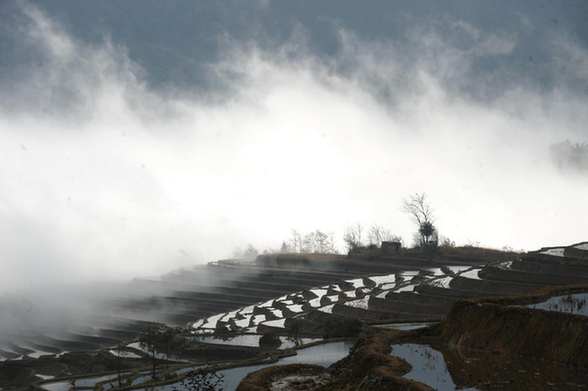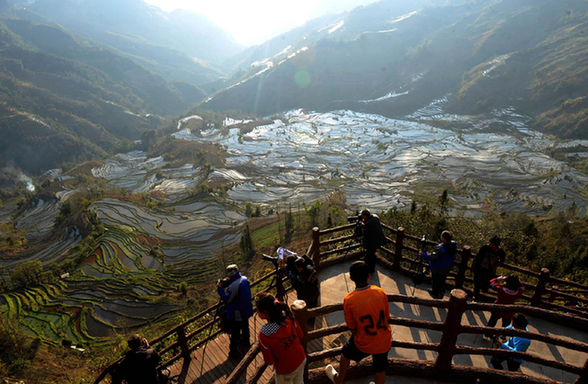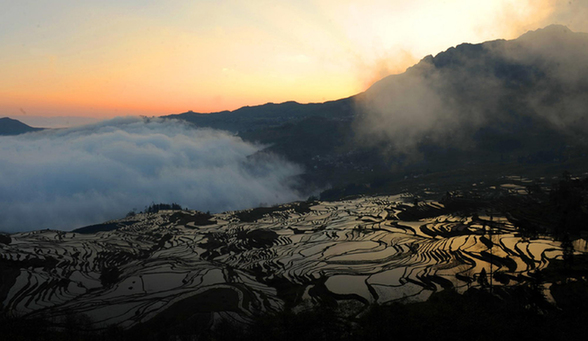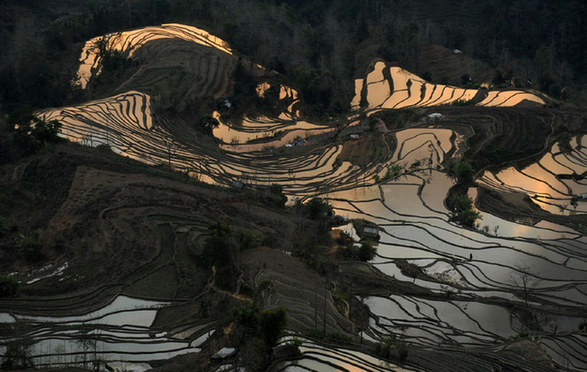|
 China’s Honghe Hani Rice Terraces
China’s Honghe Hani Rice Terraces
China’s Honghe Hani Rice Terraces, which was inducted into UNESCO’s World Heritage List on June 22, is the 45th world heritage in China and the only one that is named after an ethic minority.
But the induction also involves a challenge regarding its protection.
Hani Rice Terrace is a living cultural landscape which is defined by the World Heritage Committee as cultural properties that represent “the combined works of nature and of man”, and features sustainable interactions among the inhabitants, terrace and rivers.
 China’s Honghe Hani Rice Terraces
China’s Honghe Hani Rice Terraces
The new title of world heritage is expected to boost tourism, which will in turn stimulate the commercialization of the tourism resources, and experts are considering how to deal with the impact that a booming tourism might have on the local environment.
Some expect that the tide of visitors will have negative effect on the local ecosystem, farming system, and natural environment, and they advocate a new model of tourism that focuses on experiencing nature.
Wang Lijun, deputy director of the Architectural History Research Institute under the China Architecture Design & Research Group, has participated in project relating to the protection of Hani Rice Terrace, and he suggested low-intervention tourism.
 China’s Honghe Hani Rice Terraces
China’s Honghe Hani Rice Terraces
“The local agriculture is a fragile system and is susceptible to the effects of a modern tourism model, while so-called low-intervention tourism can better control the tourists’ behavior,” said Wang.
He added that low-intervention tourism requires that the nearby counties and villages should be further developed, so that they will have the necessary infrastructure.
 China’s Honghe Hani Rice Terraces
China’s Honghe Hani Rice Terraces
This inclusion of Hani Rice Terrace on UNESCO’s World Heritage List means that it now requires a more eco-friendly development model, which would preserve the traditional agricultural techniques and ultimately the local cultural system.
Edited by Niva Whyman and Le Qin
|